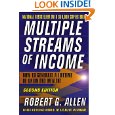 We can all learn something about saving and investing from Benjamin Franklin. Upon his death, in his will, he donated one thousand British pounds to both Boston and Philadelphia to be used to help apprentices to start their own businesses. The interesting part of the request was that he wanted the money to be invested for 100 years. After the 100 years was up, the Philadelphia investment had grown to $172,000.00 and Boston’s fund ended up with $2.3 million.
We can all learn something about saving and investing from Benjamin Franklin. Upon his death, in his will, he donated one thousand British pounds to both Boston and Philadelphia to be used to help apprentices to start their own businesses. The interesting part of the request was that he wanted the money to be invested for 100 years. After the 100 years was up, the Philadelphia investment had grown to $172,000.00 and Boston’s fund ended up with $2.3 million.
This goes to show you how important a role compounding interest can play in your investments. The more time you have to invest, the more your money will be able to work for you. As well, this lesson from history shows us the importance of choosing investments wisely. Obviously Boston did a lot better job of selecting investments than did Philadelphia.
If you are unsure of what you are currently investing in, or if you haven’t started to save for your retirement, I would encourage you to book an appointment with a Financial Planner at your local financial institution and build a strategy for retirement and your other savings goals. The sooner you make a plan and stick to it, the better off you will be.
For more detailed information on the full story about Benjamin Franklin, check out this article.

 How To Retire Rich; Time Tested Strategies To Beat The Market And Retire In Style by James O’Shaughnessy
How To Retire Rich; Time Tested Strategies To Beat The Market And Retire In Style by James O’Shaughnessy
 I’ve just started reading
I’ve just started reading  This is written especially for those of you who have just finished high school or university. I highly recommend that you start to tuck some money away for your future. Whether you want to save up for your first home, a trip around the world, or for retirement, the time to start saving is now. I know it’s hard to be thinking about retirement when you’re so young, but believe me, time goes by really fast and before you know it, you will be thinking about your retirement plans.
This is written especially for those of you who have just finished high school or university. I highly recommend that you start to tuck some money away for your future. Whether you want to save up for your first home, a trip around the world, or for retirement, the time to start saving is now. I know it’s hard to be thinking about retirement when you’re so young, but believe me, time goes by really fast and before you know it, you will be thinking about your retirement plans.